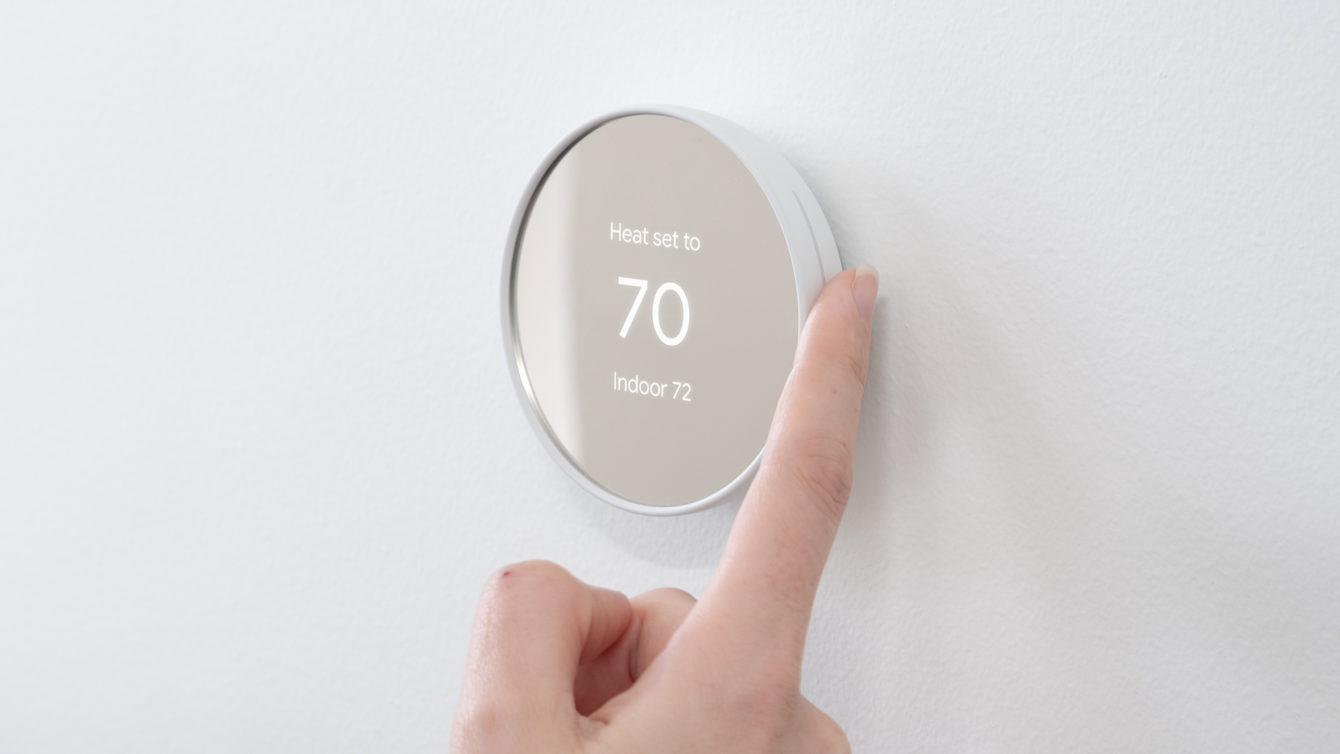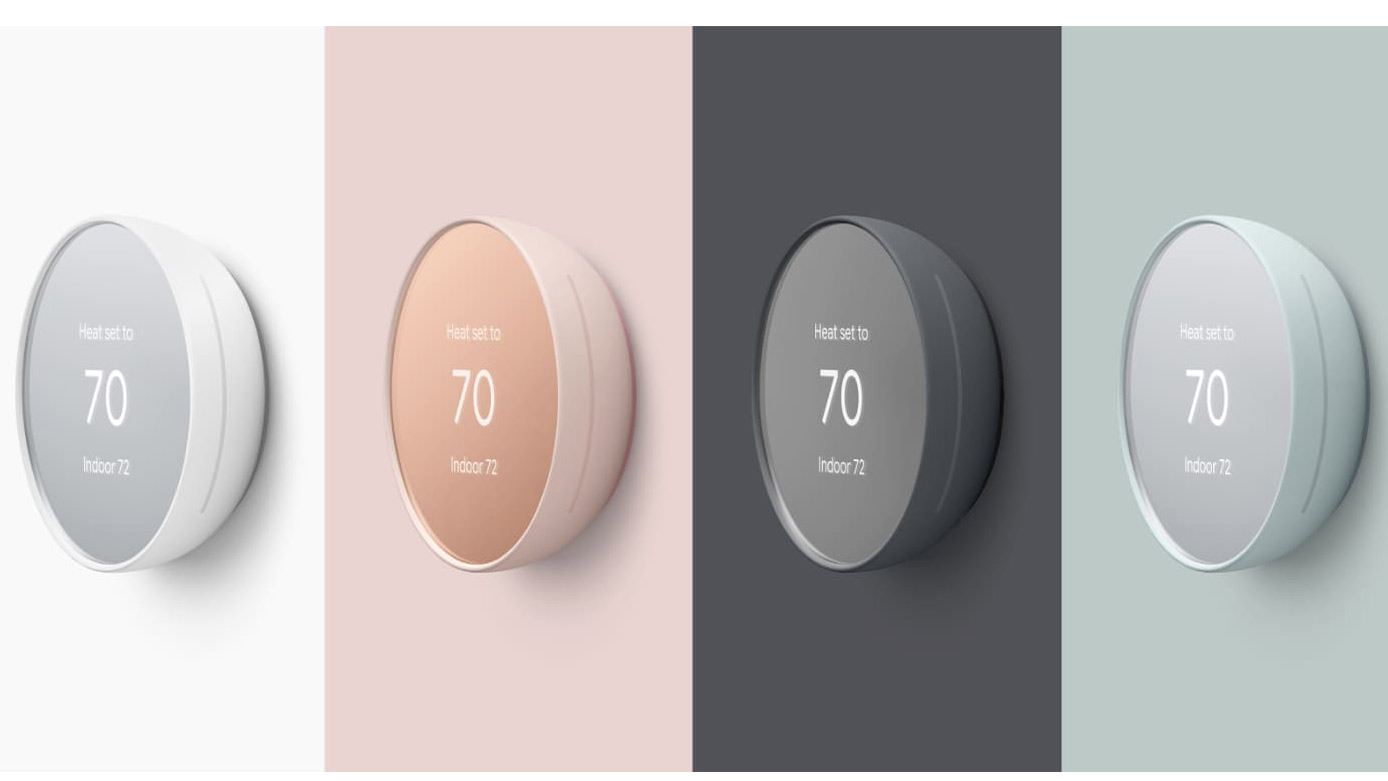Should I buy the Google Nest Thermostat?
Does Nest’s cheaper smart thermostat make more sense for your home?

Google’s Nest is one of the biggest players in the smart heating market and is most well known for its Nest Learning Thermostat, which will automatically adjust your heating schedule after learning how long it takes your home to warm up and cool down, in a bid to save energy and money.
However, it’s also one of the most expensive smart thermostats on the market too. If you can’t quite justify the $250 price tag of the Nest Learning Thermostat, then Nest has a more budget-friendly alternative. Called simply the Nest Thermostat, this is priced at a more approachable $130, yet looks and performs in a similar way.
The Nest Thermostat is currently only available in the US, where it replaced the similarly cheap Nest Thermostat E in November 2020. That model is still sold as Nest’s more budget-friendly thermostat in the UK.
So, how does the cheaper Nest stack up against other smart thermostats, and is it worth considering over its older and smarter but more expensive sibling?
Best smart thermostat deals
Read on to find out whether you should buy the Google Nest Thermostat, or if you already know which model you want to control your heating and cooling system, check out the best prices right now.
Price
Price is an important factor when it comes to smart thermostats. Because, while their intelligence, voice control and smartphone app integration are all useful, the real reason to buy a smart thermostat is its ability to lower your energy bills.
As such, the cost of the device itself should be pitted against its potential to lower your heating and cooling bills; the more you spend up front, the longer it’ll be before the thermostat has paid for itself and you’re making a real saving.
Sign up for breaking news, reviews, opinion, top tech deals, and more.
This all means the $120 saved when buying the $130 Nest Thermostat over the Nest Learning Thermostat could be key to it being worthwhile or not. Nest claims the Thermostat can save an average of 10 to 20 percent on heating bills, and 15 percent on cooling bills.

Design
The Nest Thermostat has a simple but pleasing design. Circular, with a thin bezel available in a range of colours to match the front panel, the thermostat has a modern, minimalist aesthetic that should fit into most homes. That front panel houses an equally simple display that shows the current temperature and the target temperature – the temperature your heating or cooling system is working towards at that moment.
The colour options for the Nest Thermostat are called Snow, Sand, Charcoal and Fog. In English, these are white, copper, black and pale green.
Only the thermostat itself, plus a base plate for attaching it to the wall and a couple of screws, are included in the box; Nest says DIY installation usually takes 30 minutes. You might need to purchase a trim plate from Google separately, which is designed to cover any holes or marks left behind by the removal of your old thermostat. Given the Nest is quite small, and not the usual square or rectangular shape, it’s likely that a trim plate will be needed to tidy everything up, unless the wall has been freshly plastered and painted.
Google sells trim kits for $14.99 and these are offered in the same four colour options as the thermostat itself.
The device doesn’t rotate (like the Nest Learning Thermostat does), but instead the temperature is adjusted by swiping a finger up or down on the side of the display. Changing modes and delving into the thermostat’s menu system is done by tapping then swiping at the side.

Features
Much like other connected thermostats, the Nest can be controlled remotely, either via a smartphone app or by speaking to the Google Assistant of a nearby smart speaker or display. It can also be configured to automatically turn the heating off when you leave the house (as dictated by the location of your smartphone), and switch it back on when you return home. This is all controlled by Google’s ‘home and away routine’ system, which is a part of the company’s wider smart home automation platform, called Google Home.
A regular schedule can also be created to warm and cool your home to set temperatures each day of the week, and you can take manual control by adjusting the thermostat’s target temperature, either through the Nest app, by speaking to the Google Assistant, or by swiping at the device itself.
Another feature is how the thermostat monitors your HVAC (heating, ventilation and cooling) system, then alerts you to potential problems. That way, if the heating takes longer than normal to warm up, there could be a problem with your boiler and heating system; the thermostat will then notify you about this and provide contact information for a professional to come and investigate. These notifications include early warnings about potential problems, as well as urgent alerts when it looks like there’s a serious issue – such as when the heating is on but the house temperature falls.
The Nest Thermostat does not have the artificial intelligence of the Nest Learning Thermostat, and nor does it work with the company’s Temperature Sensor, so it only knows the temperature of the room it is located in.
Should I buy the Google Nest Thermostat?
The lower initial cost of the Nest Thermostat will be appealing to those who find the $250 Nest Learning Thermostat hard to justify. It will also surely appeal to buyers who want an attractive piece of technology that is offered in a range of colours designed to complement the aesthetic of their home.
If you already own some Google or Nest smart home devices, then this thermostat makes a lot of sense. It will integrate seamlessly with your Google Home app, and can be controlled by speaking to the Google Assistant. There is also deep integration where Google’s ‘routines’ system is concerned, making it easy to incorporate your heating and cooling system with the rest of your smart home.
However, if you instead use Amazon’s Alexa system and its Echo smart devices, buying that company’s thermostat, or an assistant-agnostic option like those from Ecobee, would make more sense.
Similarly, if you have a higher budget, the Nest Learning Thermostat – complete with its artificial intelligence and greater autonomy over your HVAC system, plus compatibility with optional smart temperature sensors – could be more appealing.
- Check out the best smart home device deals available right now

Alistair Charlton is based in London and has worked as a freelance technology and automotive journalist for over a decade. A lifelong tech enthusiast, Alistair has written extensively about dash cams and robotic vacuum cleaners for TechRadar, among other products. As well as TechRadar, he also writes for Wired, T3, Forbes, The Independent, Digital Camera World and Grand Designs Magazine, among others.